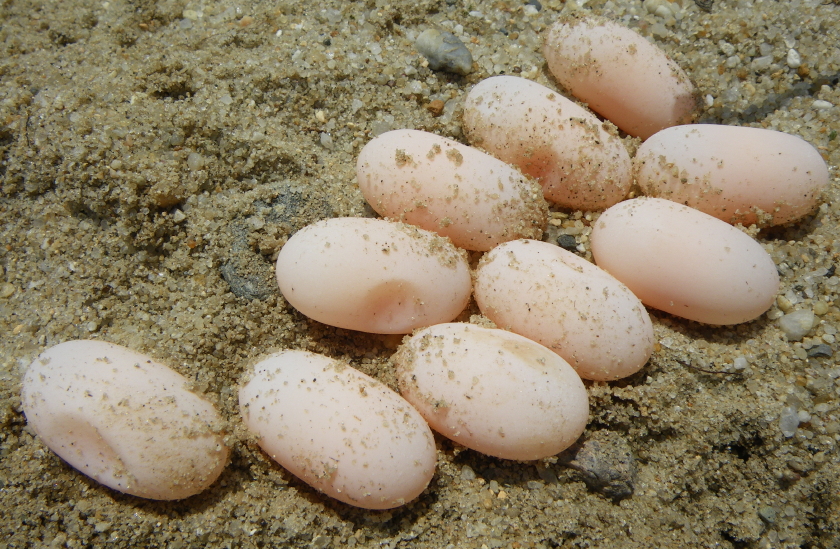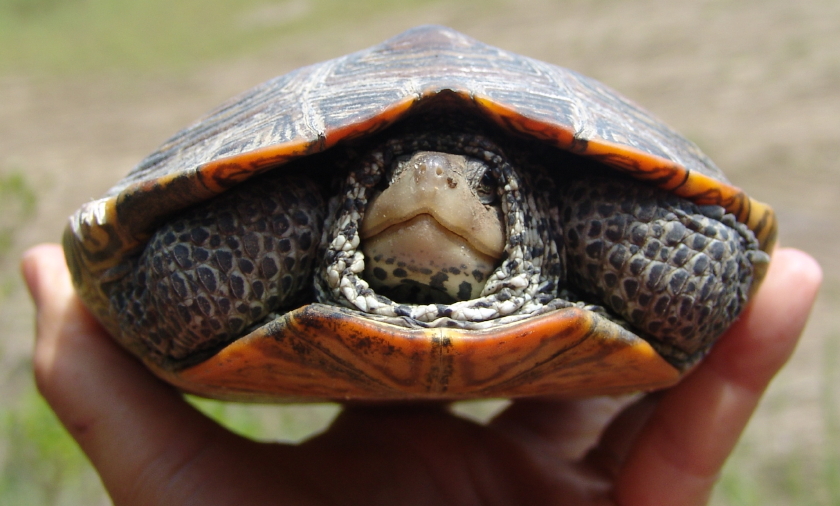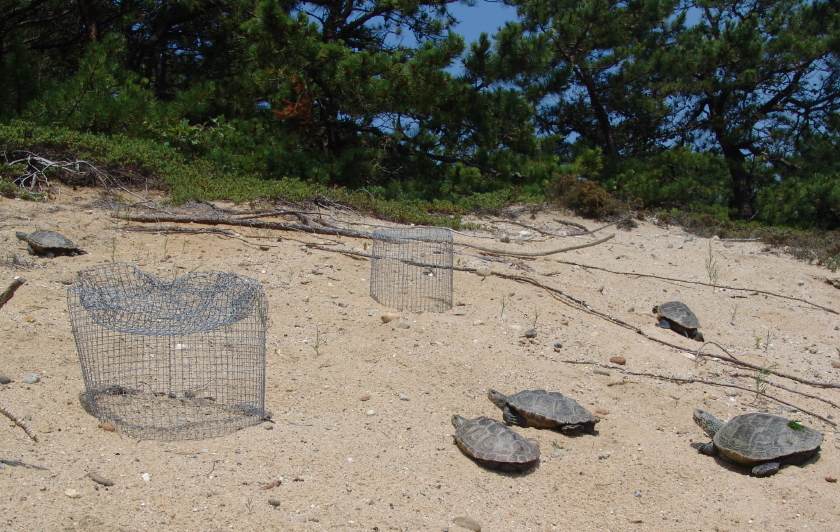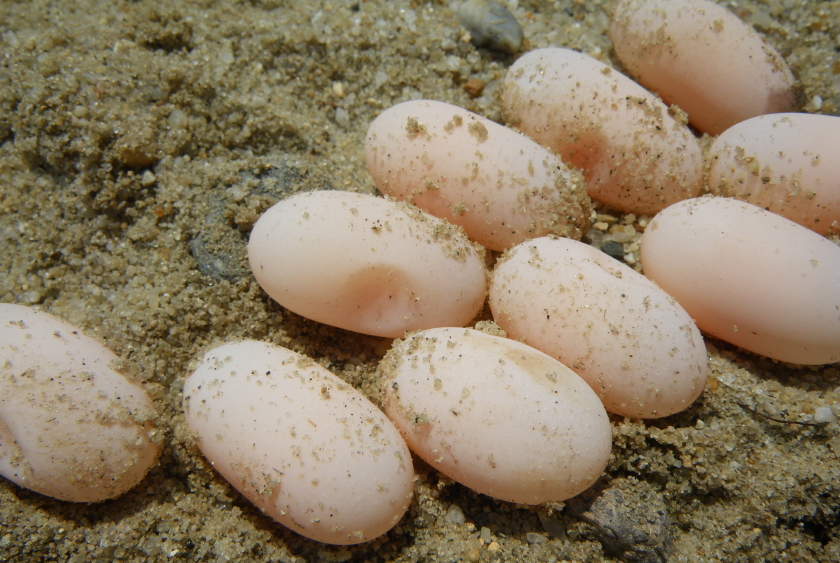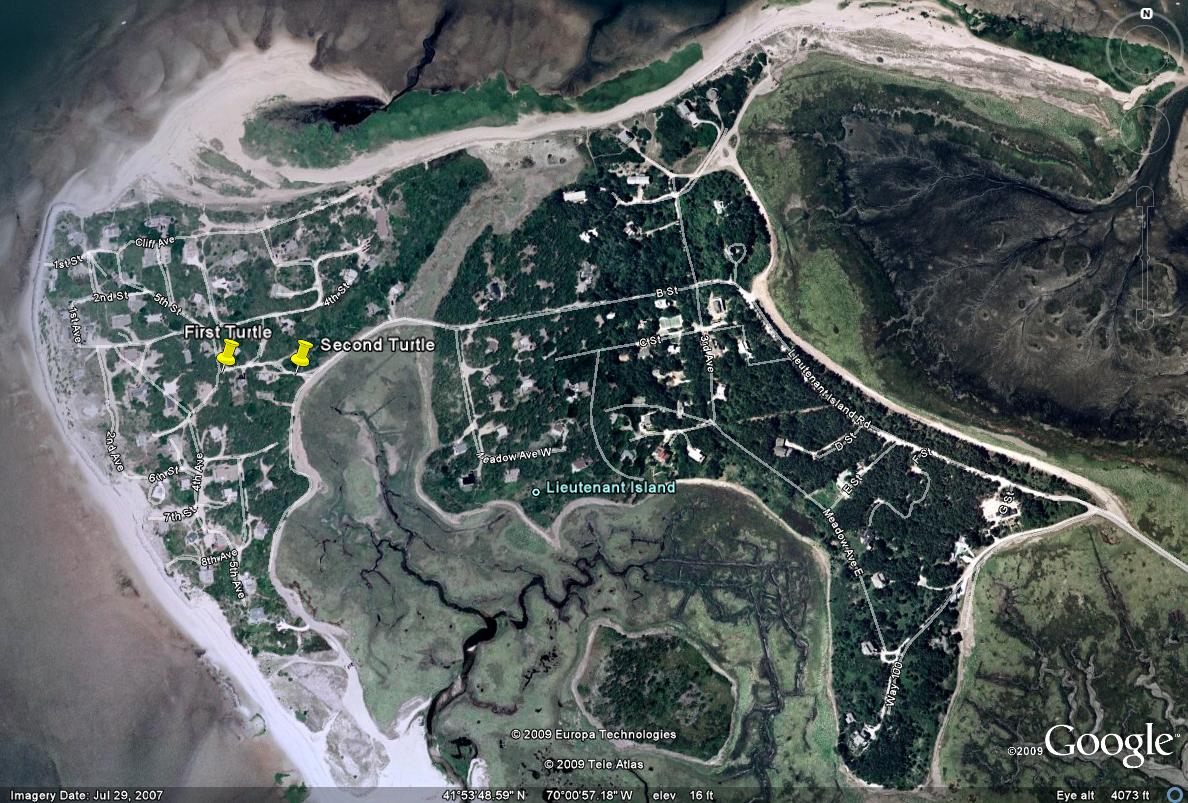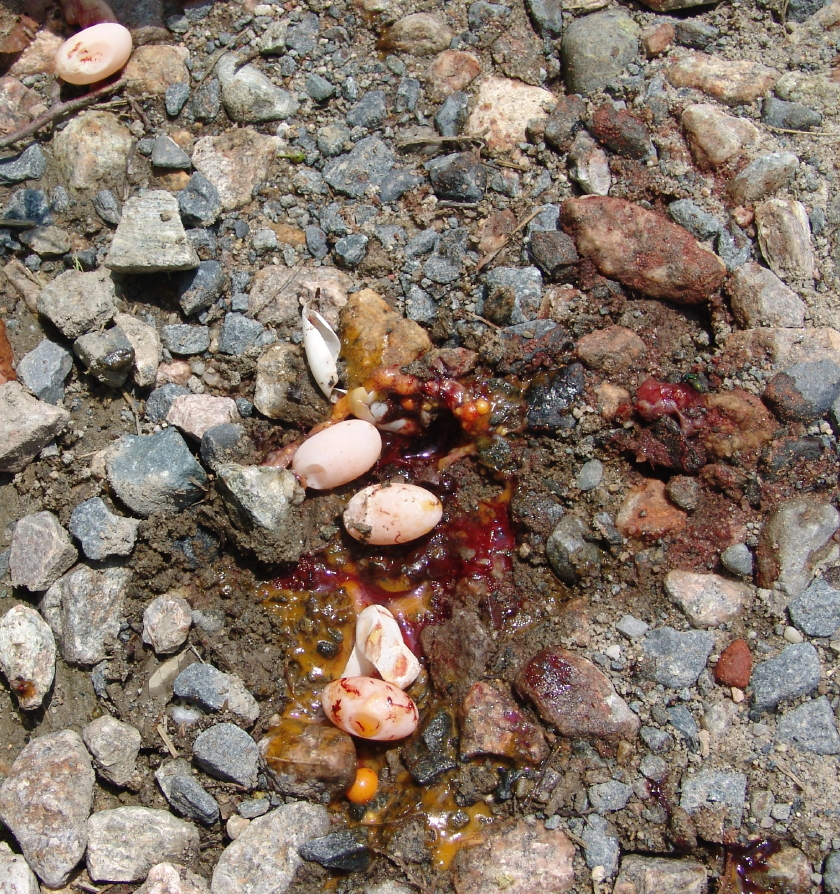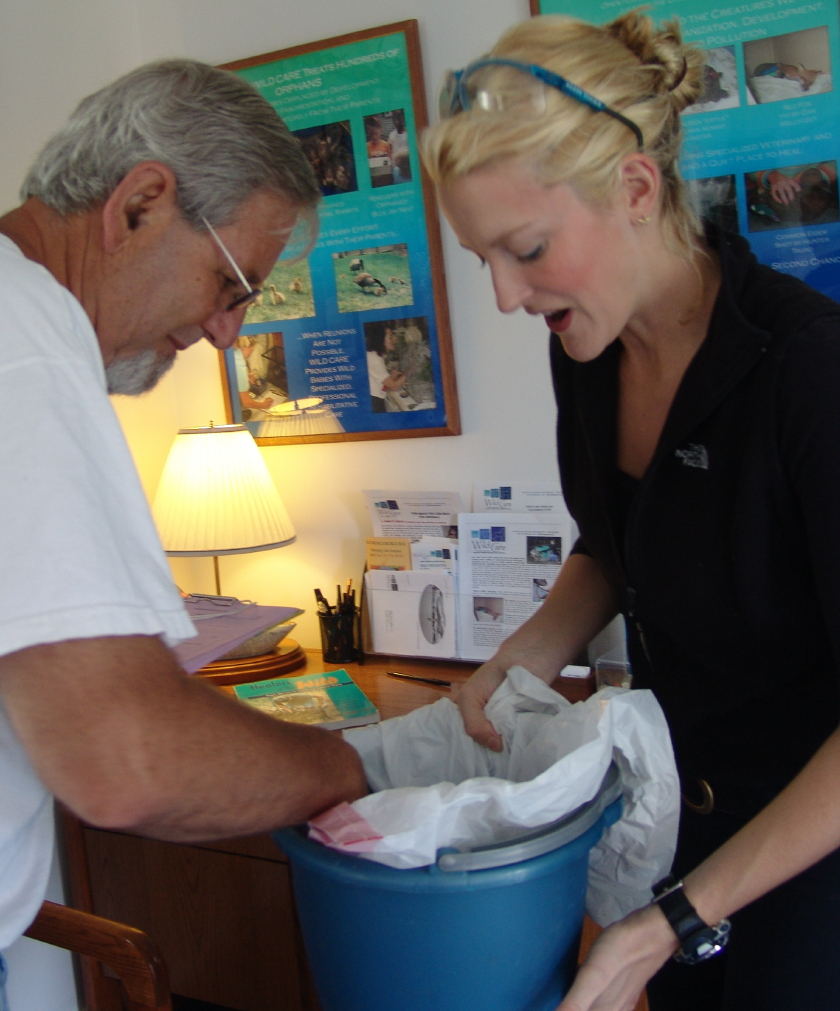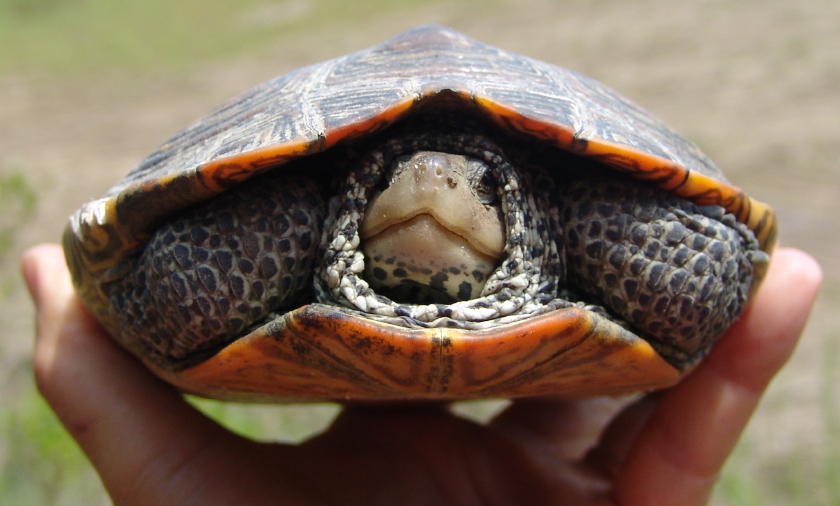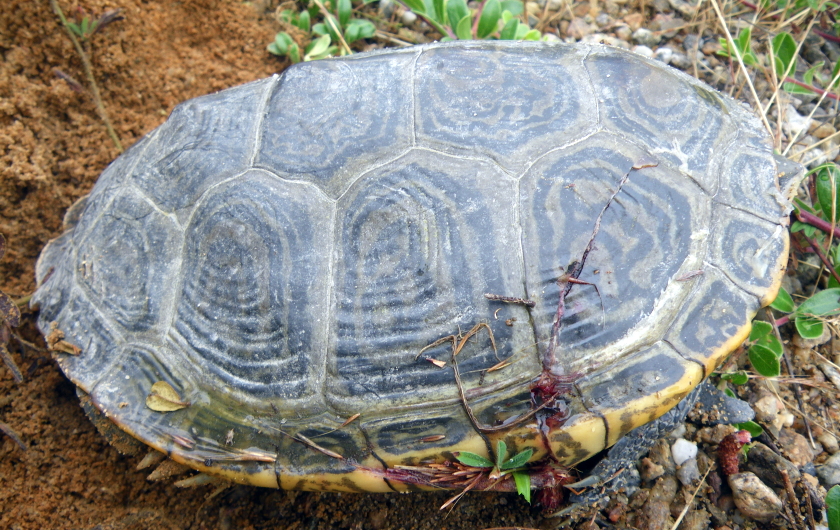
Injured Diamondback Terrapin Collapsed over Completed Nest
Click here to see published story in CapeCodToday.com.
Crushed shell, blood caked wounds, dehydrated body, and exhausted, a young female turtle collapsed over her finished nest that now held 14 beautiful pinkish eggs and the future of diamondback terrapins in Wellfleet. Without a large, powerful brain to convince her the situation was hopeless and to rationalize failure, this terrapin fought through pain and impossible odds to protect her offspring. “Neither angst nor doubt,” the turtle motto, proved key to achieving success when any smart thinking mammal would simply have given up. I guess that’s the reason turtles survived the dinosaurs and have racked up 250,000,000 years of design success. Wouldn’t it be wonderful if humans could adopt a few of their environmental survival skills.
Â
As I walked toward Turtle Point Saturday morning, a young boy called out excitedly from the Agger cottage. Tyson had been vacationing with his New York City parents for the last three weeks and had become familiar with Lieutenant Island as the nesting epicenter for diamondback terrapins in New England. He watched as they crawled ashore from Cape Cod Bay to find nesting spots all over the island from deserted dunes to rustic one-lane dirt roads and driveways. Eight-year-old Tyson gained a graduate level education in conservation biology in a few weeks of summer of adventure.
Â
“Hey, Turtleman! She’s hurt. Real bad. Bleeding. She needs help. I saw her on the road. Run over.” He spurted out words through clenched emotions.
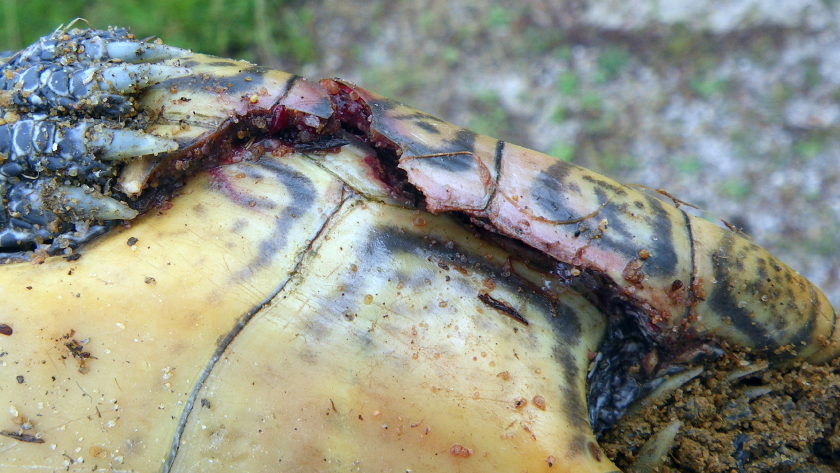
Bridge Crushed from Weight of Vehicle
Tyson’s dad explained they had found a terrapin on Marsh Road Extension near some partial nest digs on Friday night. The turtle had been run over, its shell cracked and bleeding. Tyson wanted to help the turtle; he begged his dad to put band aids on the wounds. Dad took Tyson home to settle him down, and when he returned to check out the turtle it had disappeared. “It probably crawled somewhere to die,” he said.Â
Â
I promised Tyson I’d search for the injured animal.

Grass and Weeds Embedded in Cracked Shell
Thirty minutes later I found her draped over a newly completed nest. Her carapace had large lateral cracks on both sides as a heavy vehicle had completely run over her. Despite the strong architectural design of the turtle shell, the force had crushed and broken the supporting bridge that holds together the top and bottom shells on both sides of her body. The breaks in her shell sported weeds and grass stems from where she had dragged herself to hide from predators over night. Her bleeding had congealed, but she felt light as air from exhausted dehydration. Thankfully, her strong shell repelled enough of the vehicular weight to prevent fatal organ damage; it had protected the integrity of her spinal column as all limbs continued to function normally.

Terrapin #2728 After Successfully Completing Her Epic Struggle
I tracked her by following scrapes in the compacted road and driveway. She had abandoned several tries because the ground was simply too hard to penetrate. Her last and successful attempt cut through a layer of gravel and heavily compacted parking pad soil until she reached softer sand where she could hollow out an egg chamber for her babies-to-be. Rear limbs that bear the brunt of digging were worn raw scratching through chipped gravel. She had covered the nest with every bit of sand she could find and tapped down the soil to protect her clutch. Now she lay motionless.
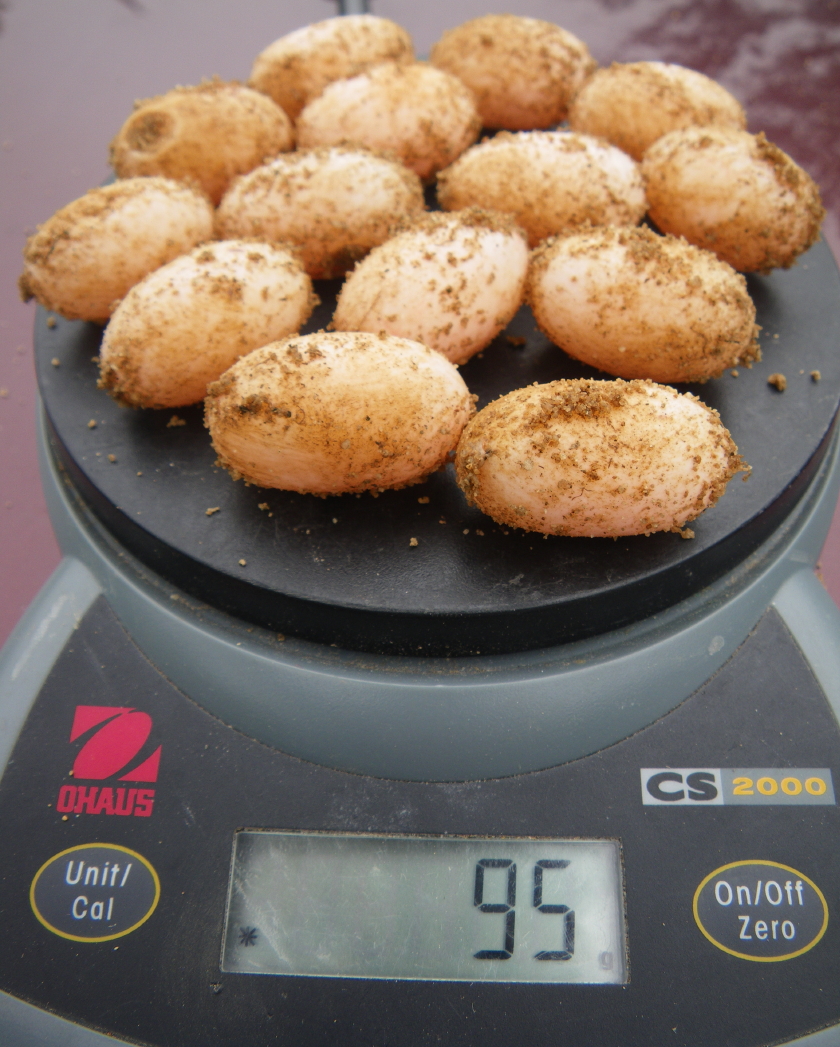
Fourteen Future Hatchlings Weighing 95 Grams (3.4 Ounces)
This turtle had been marked #2728 when we first saw her in July 2006. We had last observed her on June 25th when a group of kids found her basking on the flooded Lieutenant Island causeway as she prepared to embark on her first nesting run of the year 23 days ago.
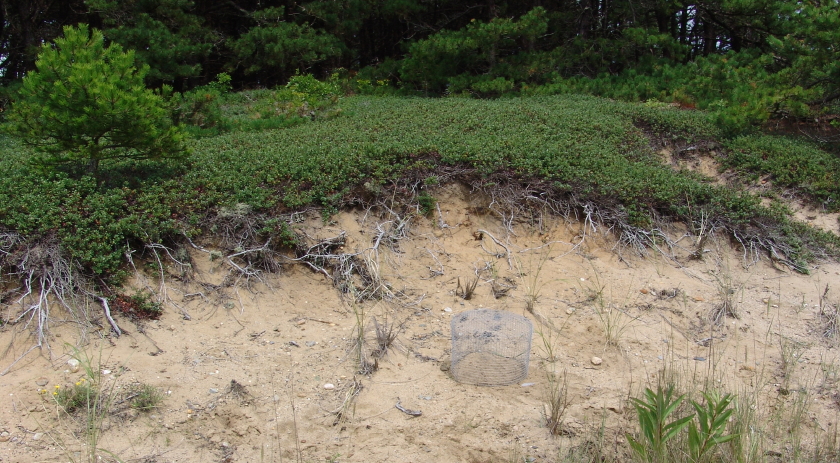
Nest Protected with Predator Excluder
We immediately cleaned her wounds to prevent infection and rehydrated her. Since her nest lay in such a vulnerable location, a parking pad, we relocated her eggs to a safe, sandy dune where we covered them with a predator excluder. We wanted to do our part to compensate for what humans had already done to her and to protect these babies she had fought so hard to save. Thanks to this little bit of extra “scale tipping,” the odds that her eggs would become turtles increased from a meager one in a thousand to better than one in ten.
Â
The lost of mature, breeding females to a threatened species, such as diamondback terrapins, is a terrible blow to their recovery. Because of the cold, late spring, turtle nesting was delayed on Cape Cod by a week to ten days, pushing peak nesting into the 4th of July weekend. The result was more than a dozen squished turtles that were run over by heavy summer traffic on the Outer Cape. The impact on a late maturing, long-lived and diminishing population like turtles can be devastating. It takes a mature female terrapin twenty to forty years of full reproduction to replace just herself. Losing a dozen mature females in a single season will have a negative impact on the Wellfleet Bay population for decades.
Â
Turtle Wins Epic Struggle to Save Offspring
With a bit of turtle TLC, Terrapin #2728 snapped to life and by mid afternoon she headed back into the healing salt marsh channels of Wellfleet Bay. We have recorded injuries similar to hers throughout our three decade longitudinal study of terrapins on the Outer Cape. Having survived the initial trauma without loss of limb function, she has a good chance of recovery. If humans can be even a tad more vigilant in such an environmentally sensitive area as Lieutenant Island, she may survive long enough to bring terrapins back from the brink of extinction. Her potential babies incubating under the warm sands of Turtle Point will have their say about the future of the species, too … if humans give them a chance.
Â






